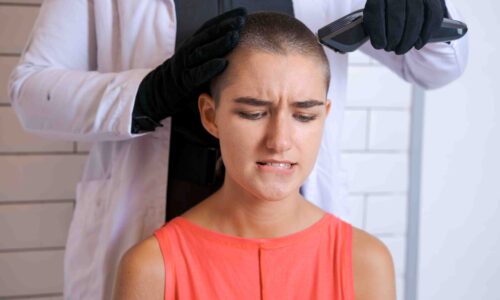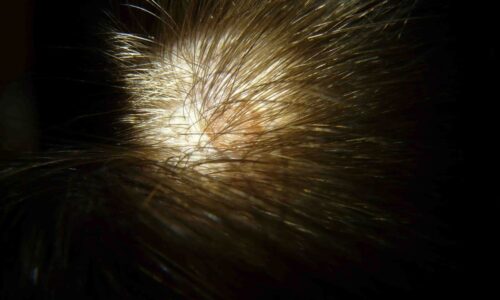If you have received a hair transplant in the crown area just recently, you must be quite excited and hopeful to see good new growth. Normally, around 3-6 months post-procedure, tiny emerging hairs can be visualized – but do remember: full density takes time. Crown hair grow after hair transplant usually takes a bit longer compared to the front hairline area.
Most individuals have the complete aesthetic satisfaction of their restoration in that area by 12-18 months after their hair procedure has been done. It seems the long waiting time every week is there for growing you to a head of hair and usually fuller head hair is emotionally powerful.
Is Crown Hair Transplant A Challenge
Many patients notice that crown hair grow after hair transplant becomes more visible around the 4 to 6 month mark. Addressing the crown via a hair transplant is uniquely challenging because this area often involves a large, circular zone of thinning, a complex hair-whorl pattern and delicate blending with existing hair. It tests the surgeon’s skill in graft placement, angling, density planning and donor-hair management.
For the patient, there’s an emotional dimension: the crown is very visible when you plan your style, look in the mirror or imagine your future look. The longer growth timeline means you must mentally prepare for the wait — but once the hair blossoms fully, the boost in confidence and sense of regained youth can be powerful.
Crown Hair Transplant Timeline: What You Should Expect
Scabbing and mild redness may be observed in the first few days after transplant, along with some of the transplanted hairs shedding. Around 2-4 months, fine, delicate hairs may start emerging, although they will appear thin and fuzzy at first. By 6-9 months, the hair density and coarseness are at a level that the crown takes on a more palpable feel.
12-18 months after surgery: Currently, you are finishing the transformative period, wherein the transplanted hairs finally mature in color and thickness and blend with your current hair. It is normal to feel concerned when crown hair grow after hair transplant appears slower, but patience is key. Minor adjustment or touch-up can even now be talked about with your surgeon at this point.
Why Does It Take Time For Crown Hair Grow After Hair Transplant?
The physiology at the vertex is slightly different from the front hairline or sides, and this figures largely in why growth takes longer at this site. First, the blood supply may not be as robust on the crown, so transplanted follicles would receive nutrition fairly slowly – putting off any visible results.
The crown area has a whorl (spiral) pattern, which makes the crown hair grow after hair transplant look more gradual. More patience is required in ensuring all this is properly done, with the end result deeply gratifying.
Crown Hair Transplant: A Timeline
Healing and visible hair growth may be minimal initially, as the follicles have to settle in. It will take around 3 to 4 months for the first very thin, barely noticeable hairs to begin showing up. The best texture building and the greatest lengthening come about between 6 and 8 months; the full thickness and blend may not have totally arrived.
Generally speaking, between 12 and 18 months, the area of the crown reaches its maximum development and the new hair unites completely with the whole of your scalp. At this point you’ll usually be comfortable styling or cutting your hair since your crown looks normal, full and strong. Remember: there is normally individual variation so that your timeline may vary a little.
Crown Hair Transplant Month by Month
- Months 0–2: Healing Phase
- Months 3–4: Early Growth
- Months 5–9: Visible Growth
- Months 10–18+: Full Maturity
Crown Hair Transplant Results 8 Months
By about 8 months post-transplant, most people will start noticing a good development in the crown visible hair, better texture, and a feeling of this is working. Not full density typically, but it is a milestone that often brings an emotional boost since finally, you can actually see the change and feel it.
Be patient with yourself during this time and do not measure up to someone at their 12-18 month mark. The next few months take you to the heart of hair thickening, the right colour, and excellent natural looks. Be good to your scalp and stay away from sabotaging habits and enjoy the new you.
Does Crown Hair Transplant Grow Slower?
Yes — in many instances indeed a crown hair transplant does tend to grow more slowly than areas like the hairline or the temples.’ The main reasons are the lower blood supply, different hair growth cycles, and the typical size of the crown thinning area that make the visual effect slower to fill.
Yet slower does not have to mean less successful – just that you’ll have to be patient, consistent, and realistic in your expectations. When the aftercare plan is honored and the timeline trusted, it could prove ultimately very fulfilling and transformational.
Crown Hair Transplant (FUE) AHT Aesthetic
If you think about or have done a hair transplant with the AHT Aesthetic FUE (Follicular Unit Extraction) method, here is what you should know: FUE lets for less invasive surgery with fast initial healing when put side by side with older techniques. As stated by AHT Aesthetic Medical center Dubai the first few weeks involve healing then at the 3-4 month mark begins the appearance of fine new hairs.
Crown Hair Transplant 2025
In 2025, the technology and expertise behind crown hair transplants have never been stronger — meaning you have access to more advanced techniques, better planning and more realistic expectations. Clinics now emphasise patient education, detailed timelines, and a strong focus on natural looking crown coverage.
For some individuals, full crown hair grow after hair transplant can take up to 18 months for complete density. The basics remain the same — you’ll still have to wait several months to see full results. However, emotionally, you are always empowered by knowing that modern methods put you in a better position to regain a confident crown. Choose a clinic with abundant crown transplant experience, ask for realistic timelines, and mentally prepare for the journey.



